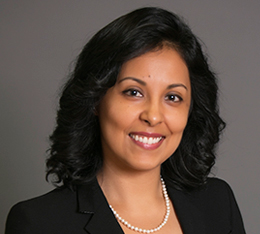The pandemic-induced recession and a renewed focus on racial inequality has heightened interest in identifying how educational opportunities can improve social and economic mobility. Dual enrollment, which allows high school students to take college courses, is an important strategy for expanding educational opportunities and improving student outcomes. COVID-19 is helping fuel a dual enrollment boom but more work is needed to target underserved communities.
In California, dual enrollment is offered primarily through early- and middle-college high schools, college and career access pathways (CCAP) partnerships, and stand-alone programs. Early-college high schools (ECHS) allow their students to earn both high school diplomas and associate degrees. Middle-college high schools (MCHS) provide opportunities to earn a high school diploma and up to 60 college credits while also targeting students who have high potential but who may not be on track to attend college. CCAP was established in 2016 to expand access to dual enrollment opportunities for students “historically underrepresented in higher education” (Assembly Bill 288).
Due to increased awareness and policy changes, dual enrollment participation was growing prior to the pandemic: recent research has found that the overall share of participating high school students grew from slightly more than 11% in 2015–16 to 18% in 2018–19, and CCAP partnerships increased from 43 in 2016 to 91 in 2019. However, this research also finds persistent racial disparities in access.
During the 2018–19 school year, 43% of districts, which serve 70% of high school students, offered dual enrollment. These programs appear to be more prevalent in high-need, high-poverty, and high-Black/Latino districts. Only 69% of students in rural areas have access to dual enrollment.
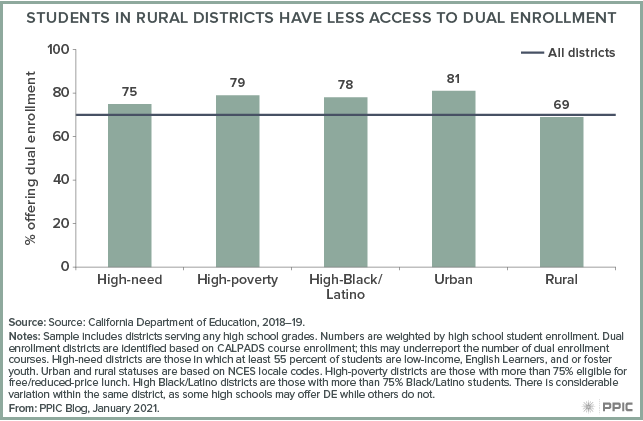
Given the potential of CCAP programs to help address the persistent gaps, we examined the characteristics of the participating high school districts. More CCAP districts are high-poverty or high Black/Latino districts. However, only 6% are located in rural areas, whereas rural areas make up 13% of non-participating districts. Moreover, many students in CCAP districts seem to be college bound. These districts have higher rates of A–G completion and college-going: 67% of high school graduates in CCAP districts enrolled in college after graduation, compared to 60% among nonparticipating districts. These disparities suggest that more work is needed to expand access in underserved communities.
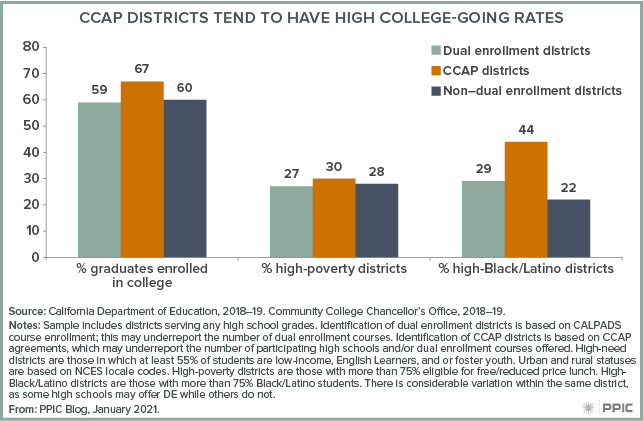
This initial look at CCAP high school districts suggests that many of the students they serve are on a college pathway, while even more are from racial/ethnic groups that are the focus of CCAP. An important next question is whether these groups, and especially those who are not already on a college pathway, are being targeted by CCAP courses. Additionally, the growth in dual enrollment programs and the need to improve college access and equity present an important opportunity to align dual enrollment with systemwide initiatives, including the Vision for Success and Guided Pathways. Future PPIC research will shed light on these important issues.
Topics
Access coronavirus COVID-19 enrollment Equity Higher Education K–12 Education Population racial disparitiesLearn More

Testimony: Improving College Access and Success through Dual Enrollment

Making the Most of State Investments in Dual Enrollment

Improving College Access and Success through Dual Enrollment
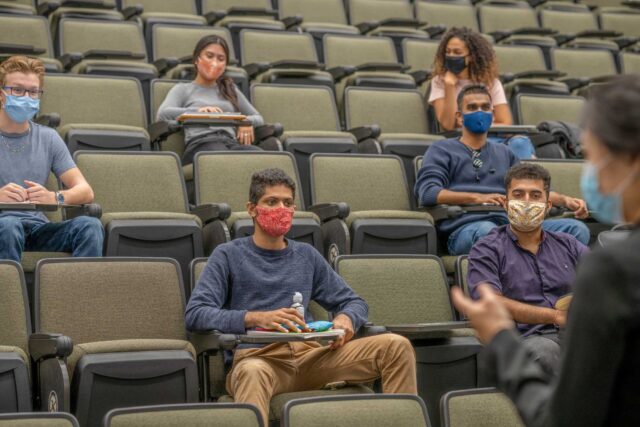
Geography of Dual Enrollment Programs in California
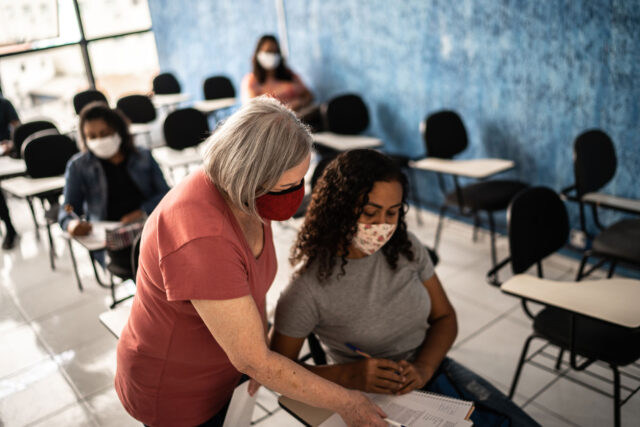
Dual Enrollment Can Expand Educational Opportunity



